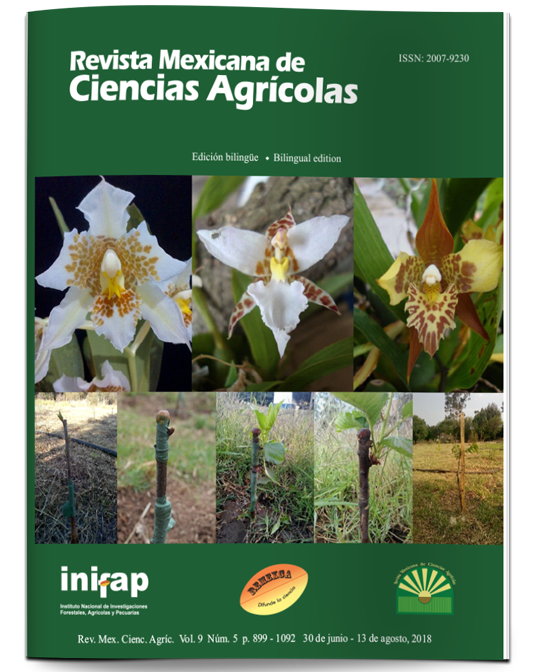Population behavior of Tetranychus urticae Koch. (Acari: Tetranychidae) in tomato varieties
DOI:
https://doi.org/10.29312/remexca.v9i5.1505Keywords:
Tetranychus urticae, population parameters, resistance, tomatoAbstract
Ten tomato varieties were examined for resistance to Tetranychus urticae by bioassays on leaf discs. A colony of T. urticae from different ornamental crops of Saltillo, Coahuila, Mexico, was established in bean seedlings (Phaseolus vulgaris L.) in a Biotronette chamber. At 25 ±2 °C, 60-70 HR and 12:12 h L: D. According to the design of the experiment, the females were placed in leaf discs of the 10 tomato varieties under study in a proportion of 10 disc with 90 repetitions, the behavior was evaluated based on survival, repellency and mortality. Subsequently, 100 freshly mated and fertilized one-day-old females were transferred to discs of tomato leaves (Solanum lycopersicum L.) of 1.3 cm in diameter of cultivars ‛Tsan-101’, ‛Toro’, ‛Saladette’ and ‛Cereza’ in such a way that each experimental unit included 1 female per disk. The demographic parameters in this experiment showed a lower growth potential of this pest in the cultivars ‛Tsan-101’ and ‛Toro’ than in ‛Saladette’ and ‛Cereza’.
Downloads
Downloads
Published
How to Cite
Issue
Section
License
The authors who publish in Revista Mexicana de Ciencias Agrícolas accept the following conditions:
In accordance with copyright laws, Revista Mexicana de Ciencias Agrícolas recognizes and respects the authors’ moral right and ownership of property rights which will be transferred to the journal for dissemination in open access. Invariably, all the authors have to sign a letter of transfer of property rights and of originality of the article to Instituto Nacional de Investigaciones Forestales, Agrícolas y Pecuarias (INIFAP) [National Institute of Forestry, Agricultural and Livestock Research]. The author(s) must pay a fee for the reception of articles before proceeding to editorial review.
All the texts published by Revista Mexicana de Ciencias Agrícolas —with no exception— are distributed under a Creative Commons License Attribution-NonCommercial 4.0 International (CC BY-NC 4.0), which allows third parties to use the publication as long as the work’s authorship and its first publication in this journal are mentioned.
The author(s) can enter into independent and additional contractual agreements for the nonexclusive distribution of the version of the article published in Revista Mexicana de Ciencias Agrícolas (for example include it into an institutional repository or publish it in a book) as long as it is clearly and explicitly indicated that the work was published for the first time in Revista Mexicana de Ciencias Agrícolas.
For all the above, the authors shall send the Letter-transfer of Property Rights for the first publication duly filled in and signed by the author(s). This form must be sent as a PDF file to: revista_atm@yahoo.com.mx; cienciasagricola@inifap.gob.mx; remexca2017@gmail.
This work is licensed under a Creative Commons Attribution-Noncommercial 4.0 International license.



